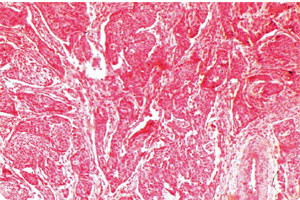There are a series of disorders that affect the mammary glands. Generally, they are related to the development of abnormal cells or alterations of the tissue that makes them up (due to infections, breastfeeding, etc.). The following stand out among them:
– Breast cancer: it is produced when the cells of the mammary tissue increase abnormally. This malignant growth can affect the cells that cover the ducts through which milk passes as well as those that make up the secretory glands of this nutritious food.There are some risk factors that increase the chances of getting it, like family history, the use of oral contraceptives and hormonal replacement therapy, among others. In order to be detected, a continuous, explorative self breast exam is useful. In women over 45, it is recommended to have a mammography once a year (x-ray that can even detect the cancer in its earliest stage).
– Mastitis: it is the inflammation of the breasts. It is common to affect women in the middle of breastfeeding (dubbed puerperal mastitis) because it occurs when one of the milk ducts clogs or the skin of the breast cracks, easing the entry of some bacteria that infect the mammary tissue. One or both breasts inflame, redden and turn rigid. It is one of the most painful disorders because the infection generates pus, which must be drained directly form the breast.
– Mammary cysts: although it is not catalogued as a breast disease, the appearance of cysts (pouches of liquid) and protuberances on their tissue is frequent. These small lumps cause pain and could represent an indicator for the appearance of breast cancer, reason for which its control is recommended.
Disorders of the female reproductive organs
Although there is a long list, next, we will show you the most frequent disorders that jeopardize the appearance and functioning of the female reproductive organs.The lack of treatment of these afflictions can cause not only the loss of some of them, but also serious fertility problems.
– Cervical cancer or of the uterine neck: it is one of the types of cancer that most frequently affects women. It is unleashed when the cells of the cervix proliferate abnormally. Its progress is slow and presents no symptoms in its first stages so its early detection helps its control. Otherwise, it advances through the adjacent organs and tissues. Depending on the cancer cells, the type of cervical cancer is called squamous cell carcinoma and is the unencumbered expansion of the cells of the cervical surface (they originate more than 80% of this type of cancer), while the adenocarcinoma is the increase of the cells of the cervix’s glands.
– Uterine fibroids: they are non-cancerous masses lodged in the uterus and cervix. They originate due to the abnormal development of cysts in this organ’s muscle wall (internally, externally or between them). These benign tumors are very common and generally do not cause any major problems. They are associated to symptoms such as a greater menstrual flow, cramps and urinary or intestinal problems.
– Polycystic ovary syndrome: it is a hormonal reproductive problem that is characterized by an abnormal increase in the size of the ovaries, accompanied by the appearance of cysts (pouches of different diameter filled with liquid). It is characterized for causing irregular menstrual cycles.The presence of high levels of androgen hormones causes an increase in hair (hirsutism) and excessive acne; in more serious cases, it can even bring on the appearance of male features.
– Salpingitis: inflammation of the fallopian tubes caused by an ascending genital infection (generally sexually transmitted). Gonococcuses, chlamydias and other pathogen agents can travel from the genitals to the innermost areas, causing the appearance of pus in the tubes. They slowly become clogged. One of the main indicators of this disease is a strong pain in the lower part of the abdomen. Foul-smelling vaginal secretions can also appear, as well as painful sex or urination, fever, vomiting, among others. It mostly affects young women, from 15 to 20.
– Amenorrhea: it is the temporary or permanent absence of menstruation, caused by physiological factors (puberty, pregnancy, breastfeeding or menopause) or pathological ones (syndromes that affect the uterus and ovaries, infections, hormonal alterations, malnutrition, tumors, etc.). Even stress can affect a normal and periodic menstruation.
– Endometriosis: it is a fairly frequent disease among women. It happens when the mucosa that lines the uterus, the endometrium, invades other tissues and organs housed in the pelvic cavity. The endometrium begins to grow in the back part of the uterus, ovaries, bladder, ureters and even the intestines, affecting their correct functioning. As normal, during each menstruation the endometrium adapts in order to receive the embryo; this layer cannot tell the organs apart for its development, so it also grows in the invaded structures. An inflammation and scars develop in the invaded structures.








 Muere Evita
Muere Evita